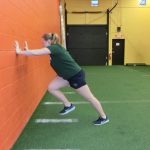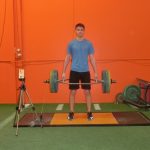Starting an Off-Season Hockey Program
It’s the time of year when hockey season is ending for most high school athletes and the time to get a jump start on next year. Any of you that are familiar with F2P know that we take a very systemic approach to our program design for our athletes. We will highlight 3 of our screening principles we look at in evaluating our hockey players entering the off-season. They are bilateral (two-legged) alignment, unilateral (one legged) positioning, and how well they can create lateral angles. These are just a few of the basic principles we use as a foundation to enhance on-ice performance.
Bilateral Alignment
What is it?
Bilateral alignment is the similarities and differences between your two legs when standing with your feet parallel. How do your hips, knees, and ankles line up with one another as well as with your other leg. Not just standing, but also how is this relationship maintained through basic movements like a squat.
What does it tell us?
Looking at and analyzing an athlete’s bilateral alignment can identify muscle imbalances that will result in movement compensation. The imbalances could be from strength deficiencies, flexibility issues, or lack of muscle activation. When an athlete compensates their movement, it will lead to inefficient power production and increase the chances of injury.
Why is it important for hockey?
The two biggest issues that I see with bilateral alignment in hockey athletes are their knees coming together and their pelvis having a shift or rotation in one direction (instead of staying square). Both of these issues will lead to excess movement in the skating stride causing less energy to be transferred in the push, thus leading to a loss of speed.
Unilateral Positioning
What is it?
Unilateral positioning is the placement of your joints when on one leg, or in a staggered (lunge) position. Again, it isn’t just the positions that the joints are in when static, but also how they interact when moving.
What does it tell us?
The ability to efficiently get into, hold, and come out of a one-legged position demonstrates adequate strength levels (eccentric, isometric, and concentric) for explosive movements. If the athlete is inefficient in their positioning then they are going to have to expend more energy in order to move explosively. Correct positioning will allow the body to work as one unit.
Why is it important for hockey?
In hockey, there is a lot of talk about having good knee bend. However, it is not just how the knee bends, but also how are the hips and ankles bending at the same time as the knee is bending. Getting the leg to bend or coil together will lead to better positions to create force horizontally and laterally which is the optimal directions for a powerful skating stride. Overbending at just the knee will put the body in a position to create downward force resulting in less power for each stride.
Creating Lateral Angles
What is it?
Creating lateral angles of the lower body is the directional “lean” an athlete can create and maintain.
What does it tell us?
The amount and the way that an athlete can create a lateral body lean will tell you about how they will be able to move in a lateral direction. Being able to create and hold greater angles will put the body in better positions to stop and change directions.
Why is it important for hockey?
Being able to use your edges while turning, stopping, and changing directions is vital for increased agility on the ice. If an athlete can create and have the strength to hold greater angles when turning it will make it easier for them to retain their speed. Being able to stop on a dime and restart quickly will be easier if you have the strength to stabilize yourself at greater angles. Creating lateral angles is especially important for goaltenders.
When we look at assessing a hockey athlete there are many different categories we look at such as their power, speed, and strength. But, for us, the foundation of the assessment lies in the screening of key principles. Among them are bilateral alignment, unilateral positioning, and the type of lateral angles that they can create. Educating the athlete about these principles will set the athlete up for the greatest amount of improvement throughout their off-season training. Although we talked about how we use these in our offseason assessment it should be noted that we are always assessing them year round since they are the foundation of our program. Without the adequate understanding of these principles, the athlete won’t be able to get into our more advanced and specific training methods.





